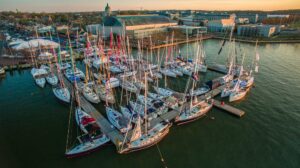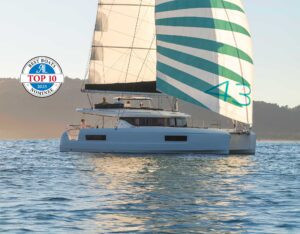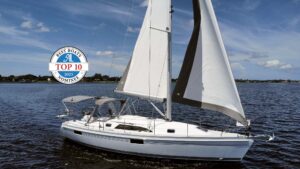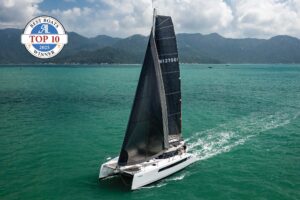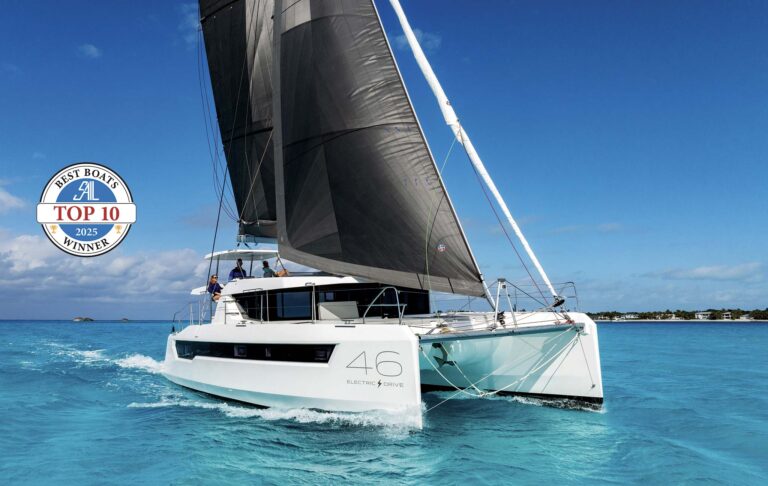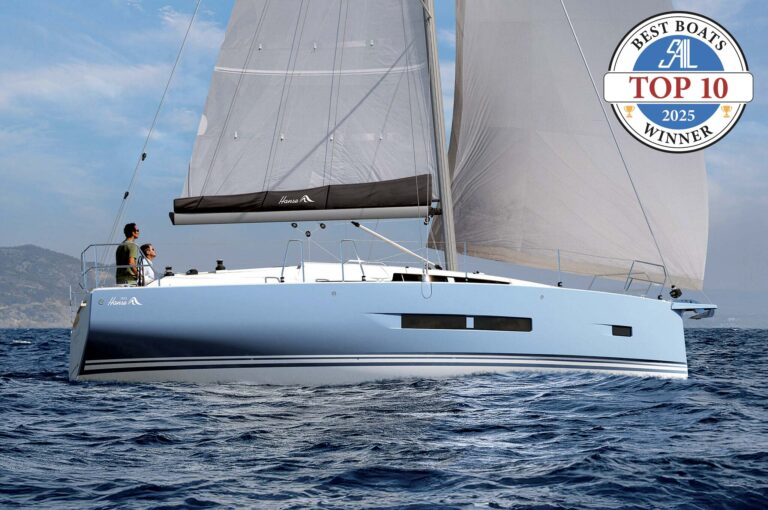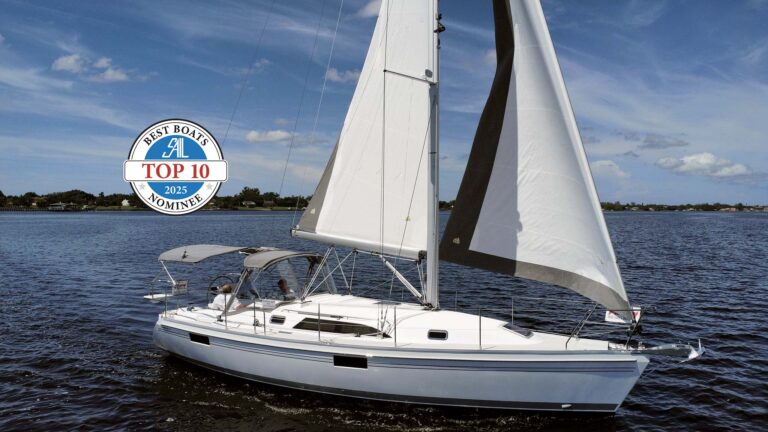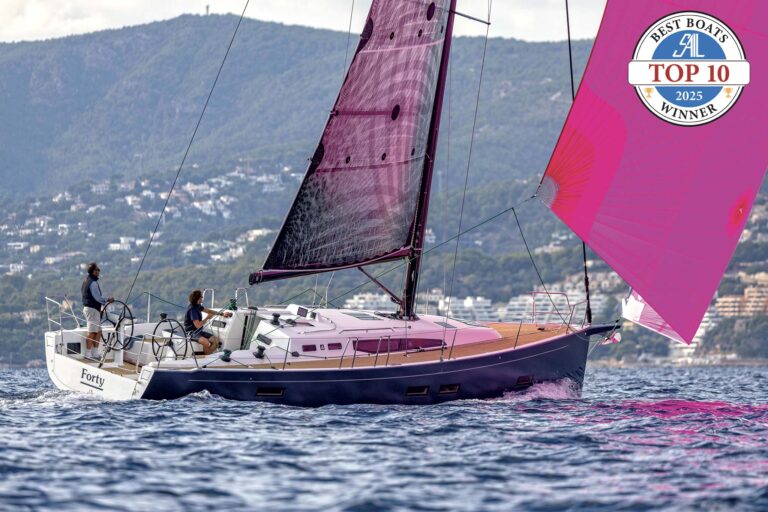
New to the U.S. market, the Slovenian-built Pegasus 50 has already proven its offshore sailing chops, winning the 2022 OSTAR. Designed by company co-founder Marko Paš, this fleet bluewater cruiser is aimed at the couple or small family who want to sail fast and comfortably across oceans. Hull No. 1 launched in Europe in 2021; this year, newly launched hull No. 9 is coming to the U.S., with No. 10 destined here next year as well.
The overarching sense one gets while learning about this boat is that it was designed by people who have spent a lot of time offshore and simply “get” what a sailor is going to want and need. This is true of ergonomics as well as design and practical details, large and small. Examples include the unfussy, workmanlike helms handling twin rudders, well organized with perfectly placed primary and secondary winches. The carbon hardtop extends aft to the helms with a canvas center that can easily be rolled forward in good weather. Hatches overhead and opening windows forward provide extra ventilation, and a centerline cockpit table includes a built-in fridge drawer.
Lift this table and open seats on either side to step down into all of the boat’s technical and engine spaces; maintenance and repairs are a revelation with this much access.
Through the side-sliding companionway door, a shallow two steps lead into the salon. This almost seamless transition is thanks to the design decision to “make one united space” by raising the salon floor and lowering the cockpit floor. In turn, this means there are no aft cabins (allowing instead for the technical spaces); the main living space is the salon with wraparound windows, with sleeping cabins low and midships—the most stable part of the boat—and forward.

To port, the offshore-worthy galley has stainless steel counters—brilliant and practical—while another workspace opens up when you lift the nav station seat just forward (storage, which abounds throughout, is also here). That nav station provides an ideal night-watch location with full visibility, all electronics at hand, and enough space to catch a nap.
Probably the most unusual feature here is the gimbaled dining/lounging area. The whole structure—lightweight and built of carbon—can be canted 10 degrees to either side, so that on a long tack, the space can compensate for heeling, making life easier and helping reduce crew fatigue.
On deck, a deck-stepped, two-spreader carbon mast carries a 736-square-foot mainsail with a self-tacking J2, a J1 genoa, and an asymmetrical chute. Pegasus execs say that at 20 knots true wind, at a true wind angle of 100 degrees with the full main, J1, and the autopilot steering, you can expect boatspeeds of 12.5 knots. To increase strength and reduce weight, more than half of the boat is carbon.
Below the waterline, the tandem keel is the scene-stealer. This is not a new concept, but it’s fresh on a performance cruiser like this, and it reduces leeway when sailing upwind, allows for a lighter keel fin with a robust bulb to lower the center of gravity and increase stability, provides more area to distribute potential grounding loads, and enables smaller rudders by improving overall control.
The Pegasus 50 Globe has a 75-hp Volvo Penta on a saildrive with a three-blade folding Gori propeller, Victron 400Ah LiFePo4 batteries, 720 watts of solar and a Watt & Sea POD 600 hydrogenerator. The Pegasus 50 Electric is powered by an Oceanvolt ServoProp 15kw dual propulsion system, Valence 38.5kWh 48VDC battery bank, and a Fischer Panda 11000-48V.
LOA 49’ Beam 15’10” Draft 7’8” Displacement 25,794 lbs. Sail Area Main 736 sq ft, J1 104% genoa 649 sq ft, J2 345 sq ft, asymmetrical spinnaker 2,023 sq ft Power 75-hp Volvo Penta or Oceanvolt ServoProp 15kw.

June/July 2024


